What Is the Difference Between a Horse and a Pony
What Is the Difference Between a Horse and a Pony
Whatever links on this page that atomic number 82 to products on Amazon are chapter links and I earn a committee if y'all make a purchase. Thank you in advance – I really appreciate information technology!
My granddaughter labels every pony a baby horse; when I correct her, she ever asks, "what the difference." So I decided to provide a thorough answer for her and anyone else interested in knowing the differences between horses and ponies.
There are numerous differences between ponies and horses; ponies can't exist taller than 14.2 hands, just horses tin can; ponies accept thick coats, manes, and tails, while horses' hair is more than delicate. Ponies are like shooting fish in a barrel keepers and have wide chests and short heads, and horses are more fragile and refined.
Ponies and horses are members of the Horse species, so they accept a lot in common. Simply there are some significant differences between ponies and horses too.
The difference between ponies and horses.
| Horse | Pony | |
|---|---|---|
| Height | Over fourteen.two | Under 14.2 |
| Coat and Pilus | Fine | Fibroid, thick coat, and thick mane, and tail |
| Caput and Neck | Long head and neck with large ears and eyes | Short head and neck with large eyes and tiny ears |
| Torso | Proportionate | Stocky, and wide, circular chest |
| Legs | Long | Brusque legs with hardy hooves |
| Feeding | Varies by breed | Easy keepers |
| Os | Varies by breed | Thick, dense bones |
| Temperament | Varies by brood | Intelligent, friendly, simply tin can be cunning |
| Origins | Varies by breed | Cold European Climates |
Height
The almost apparent differences betwixt ponies and horses are their height. The standard dominion is under 14.2 hands, and the equine is a pony, over 14.2, and it's a equus caballus, just in reality, it'southward not that simple.
Horses, on average, stand 15.2 easily alpine. These are alpine animals; some draft breeds such as the Shire exceed 18 hands. But non all horse breeds are alpine; some are relatively short, like the Icelandic breed, which averages below 14 easily.
As well, some pony breeds exceed xiv.2 hands. Why some short equine species are classified as horses while alpine pony breeds are not horses varies, but it's likely due to the fauna'south build and utilise. But one thing to go along in mind, regardless of what many think, a pony is not a infant horse.

Hair: Coat, Mane, and Tail
A difference between ponies and horses is the thickness of their coats and the coarseness of their hair. Most pony breeds originate from common cold climates areas with crude terrains.
They developed thick hair and coats that insulate them and go on them warm even in frigid climates through the evolutionary process. Ponies' manes and tails grow long, thick, and coarse.
This hair provides another layer of protection against harsh weather. Horses, manes, and tails are typically much finer. A ponies glaze is relatively thick year-round merely adds extra protection during cold seasons.
On the other hand, virtually horses accept thin coats in the summer and only abound denser hair during cold seasons. Some horses don't develop pilus thick plenty to protect against frigid weather adequately.
Thin coats are peculiarly prevalent in breeds that originate in warm climates, such equally the Arabian and Akhil Teke's. Non all horse breeds have fine coats; draft breeds such as the Clydesdale and Shire have thick coats, tails, and manes.
But like the pony breeds, they also originate in common cold conditions areas. At that place are also pony breeds with fine coats and pilus, much like horses.
Conformation
Conformation describes the master bone and musculus structures of an brute. Information technology typically refers to bone length, thickness, joint angles, and overall equine residue.
Ponies and horses have different conformations. Dissimilar breeds of ponies and horses vary, but the differences between these 2 equines are primal.
Ponies may not await as graceful as horses, but their trunk has incredible pulling power. Ponies can pull loads of keen weight, and some tin can fifty-fifty booty as much as large typhoon horses.
Bodies
Ponies have a round barrel breast with a broad, sprung rib cage. They are also short-bodied. In proportion, horses have a much leaner and gracefully built torso. Even behemothic draft breeds don't display the thickness of a pony.
Heads
Ponies and horses' heads differ; a pony has a short head with big eyes and tiny ears. Horses, in comparison, accept large heads with wide nostrils and big ears.
Legs
Horses have long, lean legs with proportionate cannon basic and sparse hooves. Ponies' legs are brusque only powerful, and they also have strong, durable hooves. Some horse breeds are prone to hoof disease.
Thoroughbreds are notorious for bad anxiety. They've been selectively bred for speed without regard to their feet. This has resulted in many horses with paper-thin hooves.
Bone density
Ponies and horses accept different os densities. Ponies generally take denser bones than horses. A report comparing bones from ponies to Thoroughbreds found the relative density of most bones was greater in ponies.
The test is limited to ane equus caballus breed, merely information technology has at least i scientific sample to confirm our theory. Regardless of density, ponies have thick bones relative to their size.
Eating
Ponies and horses have unlike dietary needs; however, anatomically, they are similar.A written report on the digestion rates of equines plant ponies and horses processed food at similar rates.
Both ponies and horses swallow grass, hay, and grain. Nonetheless, a pony typically requires just a pocket-sized per centum of the poly peptide and minerals that horses need. A ponies can thrive on a daily ration of forage equal to two% of body weight.
Horses require higher quantities of poly peptide and more minerals than a pony to maintain their health. Pony breeds evolved in harsh environments with minimal forage. These conditions led to ponies' ability to survive on low-quality forage and thick coats to fend off the cold.
Ponies are like shooting fish in a barrel keepers and put on weight without much effort, and so it's easy for them to become obese. Obesity in ponies is a problem that often leads to equine metabolic syndrome, laminitis, and insulin resistance.
Temperament
Ponies and horses have unlike temperaments. Ponies are generally smart across all breeds, and the aforementioned can't be said nearly horses, although there are enough of intelligent horses.
Ponies' intelligence can be a good or bad trait. With proper training, ponies are infrequent animals. They make swell equines for beginner riders and are an outstanding addition to most farms. Merely when given likewise much latitude, they are terrors.
Because these pocket-size animals are smart, they examination their owners and are frequently stubborn. Horses are not equally like shooting fish in a barrel to generalize; each breed exhibits distinct personality traits.
Hot-blooded breeds, like Arabians and Thoroughbred, are intelligent and choked, whereas common cold-blooded typhoon breeds are typically at-home and friendly.
Pony or Horse? Equines that Don't Fit the Stereotype
Ponies and horses are equines with similar attributes. For some breeds, it's difficult to distinguish if they are a pony or a equus caballus because the animals fit the requirements of both classifications.
Some horse breeds resemble ponies, and some pony breeds have characteristics consistent with horses. The concluding discussion on if an brute is a "horse" or "pony" is left to the respective breed registries.
Here are some breeds that fall into the gray zone and could be either horse or pony.
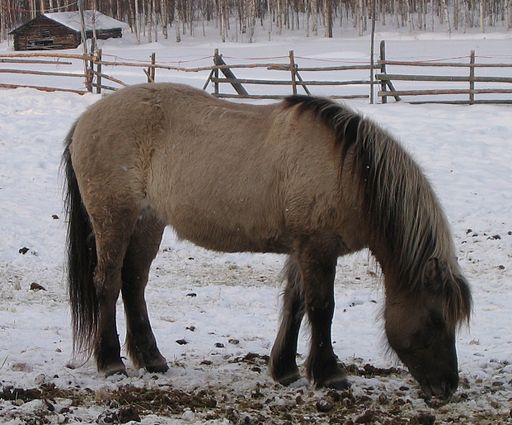
Icelandic equus caballus brood (Under fourteen.2)
The Icelandic horse breed's boilerplate elevation is 13.five handdue south, and we know that ponies are under 14.ii easily. So why are Icelandic horses not ponies? The answer isn't clear.
But the Icelandic people admittedly consider their breed to be horses and not ponies. In support of their position, they urge the equines' genetic makeup, intelligence, and strength, which they say all point to these animals being horses.
Scandinavian Vikings introduced their ancestors to the present-day Icelandic horses to the island. Genetic testing of the breed links them to Mongolian horses and also reveals ties to pony breeds such as the Shetland, Highland, and Connemara ponies,
Icelandic horses are unique. For one thing, they are probable the purest breed in the globe. Over a g years ago, the government restricted the importation of horses to the isle, thereby limiting breeding to only the horses on the island.
Icelandic horses take 5 gaits. Walk, trot, gallop, which are standard in all horse breeds, but they also have two more speeds, tolt and flying pace. Horses executing these unlike gaits at expert levels are highly desired.
Similarities with pony breeds
The Icelandic equus caballus breed is hardy, and they live a long time. It'southward common for these pocket-size horses to alive in their 40s, and some live more than 50 years.
The Icelandic horse is spirited with a gentle temperament and is not easily spooked. Iceland doesn't have natural equine predators; because of this, the animals accept a calm demeanor and are approachable. The attributes of Icelandic are seen in ponies and horses.

Fjord horse (under fourteen.two)
The Fjord equus caballus is a pocket-size ancient horse breed from Norway, where they have resided for over 4,000 years.Fjords range in size from 13.ii to 14.ii hands, with few outliers.
Fjords are versatile horses that brand good draft horses and riding horses. They accept a few unique features. All mod Fjords have the Stallion Njal 166 in their pedigree, and he was born in 1891.
Ninety percentage of all Fjord horses are dun, and most have thick upright manes. Another exciting feature is they showroom primitive markings, and their manes have a dark middle line resembling a stripe.
Traditionally, owners of Fjord horses clip their manes, making them easier to care for and exposing their distinct stripes.
Pony similarities
It's not merely their short stature that Fjords have in mutual with ponies.
The Fjord equus caballus has athick coat that protects confronting the rough winters in the cold mountainous regions of Norway. The texture and thickness of their hair resemble ponies; it'south thick, and their mane and tail long and fibroid.
Much like a pony, the Fjord horses arehardy, strong, andeasy keepers. They take the build of a draft breed just are much shorter than standard draft horses.
The Fjord horses' bone construction is compact and thick, similar to ponies, and despite their small stature, they have superior levels of strength.
Fjords, like ponies, are "like shooting fish in a barrel keepers." They gain weight quickly and thrive on relatively little food. They are also prone to develop obesity-related metabolic bug if overfed, such as colic and laminitis.
I can't fully grasp the reason Fjord horses aren't Fjord ponies. They run across more than of the characteristics of a pony than a equus caballus. But attributes of both ponies and horses are present in Fjord horses.

Haflinger Horse Breed (under 14.2)
Haflingers are a versatile equus caballus breed used for pulling carts, endurance riding, and even dressage. They typically stand between xiii and 15 easily alpine.
Similarities with ponies
Likewise their small-scale stature, Haflingers share other characteristics with their pony cousins. They typically havethick coats andlong manes and tails. They originated in the colder climates in the region of upper Italy and Austria.
They are as well powerful, and these small animals have no problem carrying a full-sized rider or a loaded carriage with ease. Haflingers are intelligent and similar ponies; they deed stubbornly and go challenging to piece of work when guided by an inexperienced hand.
Horse characteristics
The difference betwixt a Haflinger and a pony is their conformation. A Haflinger exudes proportion and strides in rhythm while displaying expert power from their hindquarters.
Add their motion to the Haflinger color, and information technology has the looks of a horse. (All Haflingers take chestnut coats with flaxen mane and tails.) Traits of ponies and horses are in Haflinger horses.
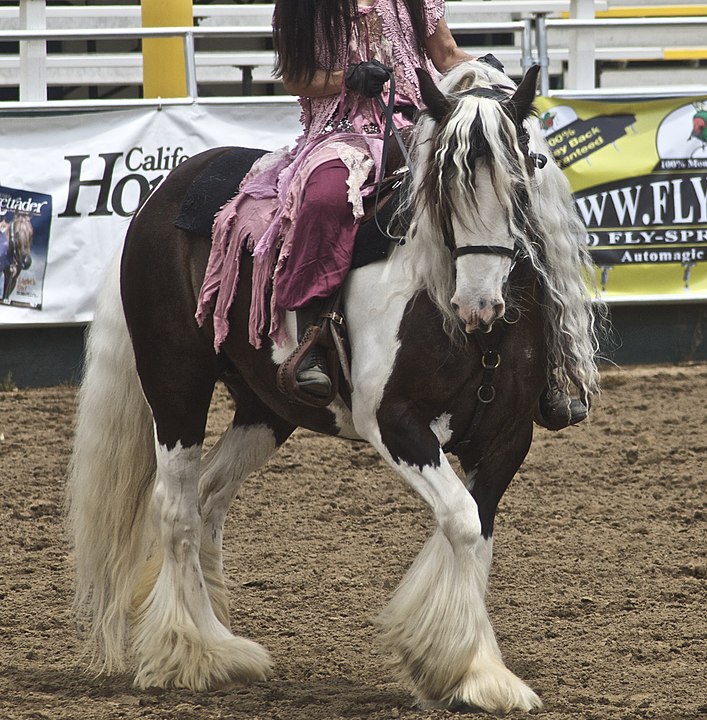
Gypsy Vanner (under fourteen.2)
Gypsy Vanners are a small equine draft breed, but like many pony breeds. They span in height from 12.2 to xvi easily, with an average of the breed standing 14.two hands tall. Considering of the size differences, the horses are divided into 3 categories.
Horses under 13 hands are called minis, horses upwardly to 15 hands are considered classic Gypsy Vanners, and horses over 15 hands are called g-sized Gypsy Vanners.
The Gypsy Vanner originated in Ireland and was refined by European Gypsies. These unique horses are besides called Irish Cob and Gypsy Cob. Only regardless of their name, they are beautiful and reliable horses.
Pony similarities
Other than their small-scale size, the Gypsy Vanner has a thick coat like to many pony breeds. They also have a gentle, cooperative temperament and are intelligent.
The Vanners are stiff and work well as a small-scale typhoon breed primarily used to pull small-scale wagons called a vardo. The vardo was the Gypsy's dwelling and independent all their possessions.
These horses were not simply working animals but an integral part of the Gypsy family. Features of ponies and horses are visible in Gypsy Vanners.
Horse characteristics
Gypsy Vanners have the look of horses; their necks are long and hold their caput loftier. Their bodies are in proportion and level from withers to tail poll. Overall they are well balanced and present a harmonious blending of musculus and bone.
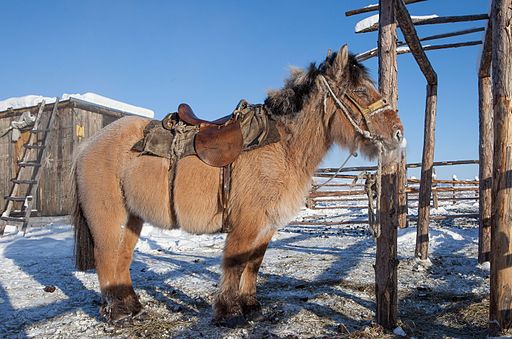
YakutianHorse (under 14.2 hands)
The Yakutian horse looks like a short, thick, and hirsuite stuffed animal. The average pinnacle of a Yakutian horse is 13 hands, which is beneath the size of a standard equus caballus. They can survive without shelter, the frigid climates of Siberia, where temperatures achieve -95 degrees Fahrenheit.
Pony similarities
Yakutian horses have the outward advent of a pony. They areshort and have thick, sturdy statures. Also, their neck is short and straight again, like many pony breeds.
Yakutia grow thick wintertime coats and long manes and tails to protect against the freezing temperatures of their homeland, where winters can last eight months. Some of the hair on their coat extends iii inches in length.
Yakutian horses are hardy and used to pull sleighs filled with ice. They are likewise "easy keepers" and tin can survive on minimal provender. They are known to find grass buried under deep snow with their exceptional sense of odor. In the harshest winters, the nutrition is supplemented with feed by the local Sakha people.
The Yakutia horse gives back to the local people by providing milk and equally a source of meat. The Sakha people apply the equus caballus's hides and hair to make and decorate clothing. Although they wait similar a pony, the Yakutia has traits of ponies and horses.

Hackney pony
Hackney ponies are shorter than 14.2, but they expect like a horse. They don't have thick bones, nor practice they have thick coats. In the following film, the animal looks like a small-scale horse.
The Hackney pony was initially developed to pull small-scale carriages. They originate from a cross between a Hackney sire and a Vicious mare. The brood registry emphasizes that the ponies not exceed 14.2 easily and maintain pony characteristics.
Hackney ponies accept a vibrant show competition. These ponies compete in harness and saddle competitions. All the same, the emphasis seems to exist on the harness.
They accept 6 divisions of harness exhibition, including pleasance driving, roadster, and cob tail. Each year they concur their world championship contest at Kentucky'southward country fair.
Maybe because of the emphasis on speed and showing these animals, they've lost the look of a pony. As well the healthy hooves and a small head, not many pony characteristics remain in the breed.
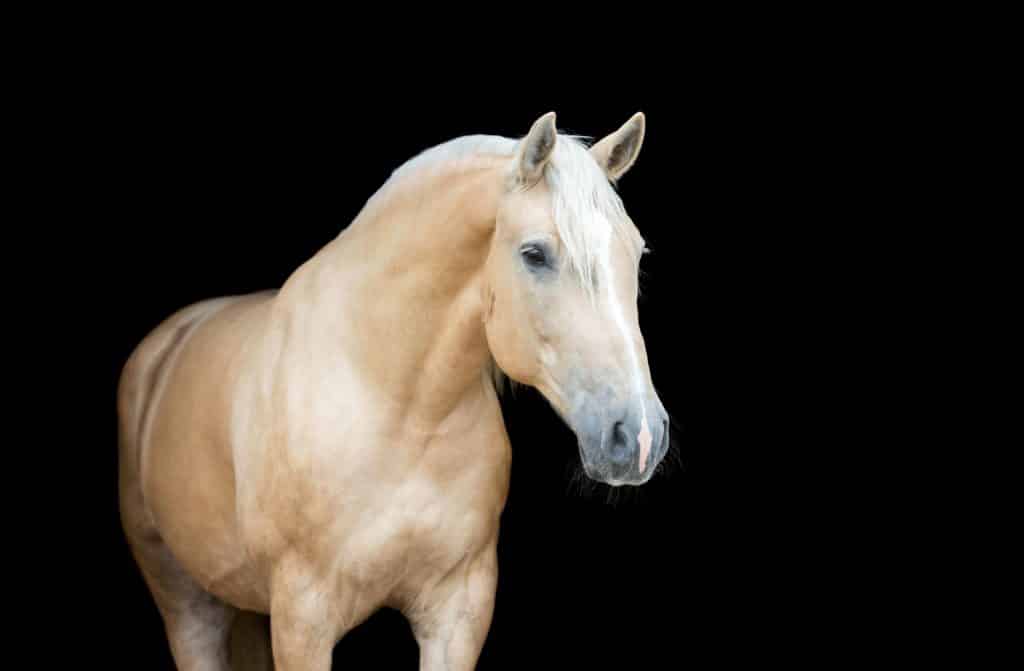
Welara Pony
The Welara pony breed was established in the Us in 1981. Nonetheless, the breed originates in England from crossbreeding Arabian horses and Welsh ponies.
They are palomino ponies that range from 11.ii hands to 15 easily alpine. They have refined basic, thin coats, and lean bodies, more than cogitating of their Arabian ancestors than their thicker Welsh relatives.
Overall, these ponies, like the Hackney ponies, resemble a equus caballus more a pony.

Camargue horse
The average Camargue horses are under 14.2 hands alpine. This breed is roots trace back to ancient France, where they lived in the wild marshes and wetlands.
These small hardy horses always have a gray coat color and black skin.
Pony similarities
Much like a pony, the Camargue horse is powerful in relation to its size. They have a compact build, with strong limbs, a short neck, and a deep rounded chest. They tin can easily carry grown adults.
The animals have large basic, small ears, and strong hooves like many pony breeds. They are also vivid and non patient with inexperienced handlers.
Horse similarities
The Camargue equus caballus has long legs and a proportionate body. Their backs are medium length, and they have well-muscled hindquarters. Besides the small ears, their head resembles a horse.
The Camargue could pass for either species of equine; it has characteristics of both ponies and horses.

Konik horse (under 14.ii)
Konik horses are an ancient breed from southeast Poland; however, their beginnings isn't credible. But what is even muddier is whether they are a pony or horse. Konik's brandish the traits of ponies and horses.
Pony similarities
These equines have a stocky build with a deep barrel-type chest. Their heads are modest, and they accept thick coats with long coarse manes and tails. The typical Konik horse is between 12.iii and 13.3, hands alpine.
They are stiff for their size and are often used as typhoon horses. These horses fit the mold of a pony, so why are they considered a equus caballus? My only guess is because the brood registry didn't desire to label them as ponies.

Appaloosa horses
Appaloosa horses are often called Indian ponies. Yet, most are over 14.2 hands alpine and take characteristics that align them with horses. The use of Indian pony is simply slang and not related to actual brood characteristics.
Appaloosa has a colorful spotted coat design that makes information technology like shooting fish in a barrel to distinguish. Information technology's hard to judge how long they've been in existence precisely, only depictions of them were etched in the walls of caves in French republic during the stone age.
Modernistic Appaloosa horses originate from the Nez Perez tribe in the northwestern United States. The Native American tribe selectively bred horses to obtain treasured traits: color, stamina, and sturdiness; the concluding result is the Appaloosa equus caballus.

Kentucky Mountain Saddle Horses
Kentucky Mountain Saddle Horses are short horses simply don't resemble ponies. Every bit you tin can see from the moving-picture show higher up, they wait like a horse. They have low-cal bones and effectively coats than most pony breeds.
Likewise their similar height to ponies, the only other common trait is that Kentucky Mount Saddle horses are "easy keepers."
To annals a Kentucky Mountain Horse, it must be in a higher place 11 hands tall. Horses over 14.two are categorized as Form A horses, and ones between eleven and fourteen.two hands are considered Form B horses.
The breed is related to the Tennessee Walking horse and is gaited. They were developed to work on farms and as comfortable riding horses for transportation. They are sure-footed horses and are primarily used for pleasure riding.

Pop Pony Breeds
Shetland Pony
Shetland ponies originated from the harsh Shetland islands off the northern declension of Scotland. Information technology'due south a frigid rugged island. They may just have three months of the twelvemonth frost-free.
Shetland ponies' roots run deep on the islands; at that place's evidence of their being going back iv one thousand years. In the mid-1800s, the isle ponies began to be used in British coal mines.
These animals were ideally suited for the tasks, and they were small enough to easily navigate tunnels yet strong enough to pull carts encumbered with heavy loads of coal.
Today Shetland ponies are popular starting time mounts for children. They range in height from 7 hands to eleven easily tall. The most common size is ten easily.

Welsh Ponies
Welsh ponies come in many different shapes and sizes. Some are taller than fourteen.2 easily, and others may be close to 11 hands alpine. The differences tin also be seen in the density of their coats. The post-obit three pictures are of Welsh ponies/cobs.
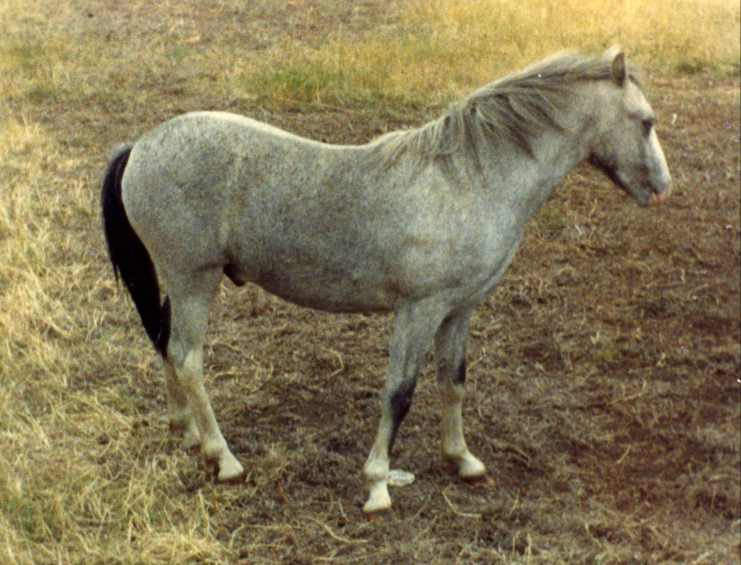
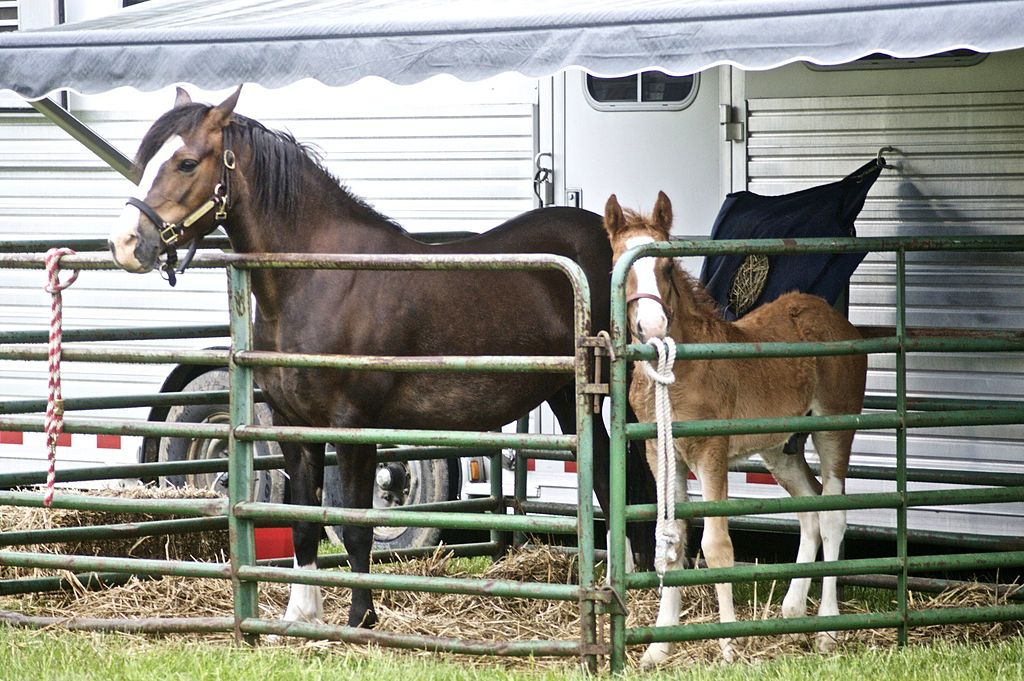
Because of the disparity of the animals, they are divided into classes within the brood. These classes are primarily sorted by top and called either Welsh ponies or Welsh Cob horses.
Welsh ponies' roots are in Wales, where they've lived since 1600 BC. The native ponies were crossbred to Arabian, Thoroughbreds, and Hackney equus caballus in the Middle Ages to create the Welsh cobs.
They've been productive in many equine activities because of their various sizes, including trail riding, prove jumping, and farm work.
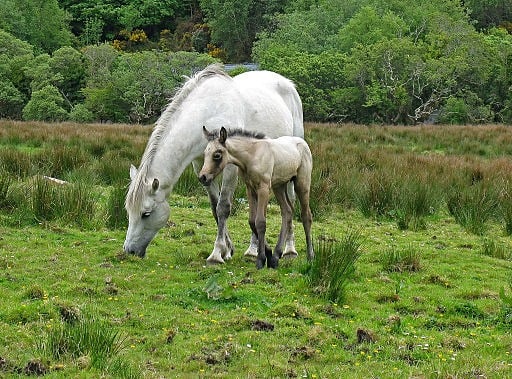
Connemara pony
The Connemara pony is excellent for trail riding. The typical connemara stands between 12.ii and 14.two easily alpine. Although minor, they are robust and surefooted plenty to carry full-sized adult riders with ease.
The early Connemara ponies were hybrid offsprings of Castilian horses and local Irish mares. Nevertheless, today'due south ponies probable include Arabian, Thoroughbred, and Hackney bloodlines. (https://www.acps.org/)
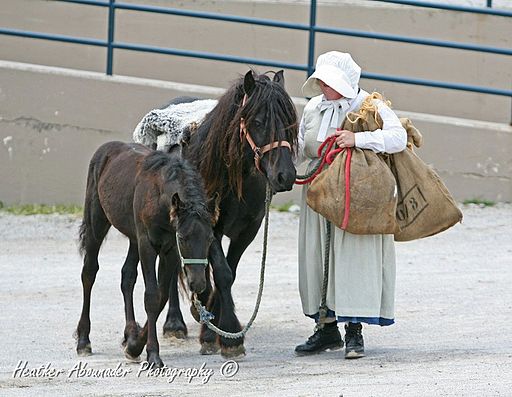
Fell pony
Fell ponies vary in height from 13 hands to xiv hands tall. They are a versatile breed that originates from northern England. Like many other pony breeds, the Fell pony is known for its forcefulness, sure-footedness, and endurance.

Pony of the Americas
The Pony of the Americas (POA) is a pony breed that originated in the U.S. in 1954. The foundation stud was the offspring of a cross between a Shetland pony stallion and an Arabian/Appaloosa mare.
The Pony of the Americas breed registry limits pony heights to between 11.five and xiv hands tall. Another breed requirement is coloring; they must have an Appaloosa pattern you lot tin can distinguish from 40 feet.
FAQ
Is a pony a different species than a horse?
Ponies and horses are members of the Horse species and take a lot of common traits. The breed registries determine if an animal should exist classified as a pony or a equus caballus. Nomenclature is not ever based on the pinnacle of the equine.
Can a horse requite nascency to a pony?
Are ponies easier to ride than horses?
Horses are generally easier to ride than ponies and are more comfortable and responsive. Ponies can be too high-spirited or stubborn for some people to handle.
What Is the Difference Between a Horse and a Pony
Posted by: mildredyourrimed.blogspot.com


Comments
Post a Comment